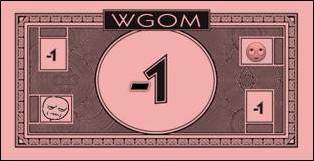TORONTO 7, MINNESOTA 5 IN MINNESOTA
Date: Saturday, July 18.
Batting stars: Gary Gaetti was 2-for-4 with two doubles and two RBIs. Kirby Puckett was 2-for-4 with a run and an RBI. Tom Brunansky was 1-for-4 with a home run, his nineteenth.
Pitching star: George Frazier pitched three shutout innings, giving up one hit with one strikeout.
Opposition stars: Rance Mulliniks was 2-for-4 with a three-run homer (his eleventh) and a double, scoring twice. Ernie Whitt was 2-for-4 with a home run (his seventh) and three RBIs. Dave Stieb pitched seven innings, giving up three runs (two earned) on five hits and three walks with three strikeouts.
The game: The Twins scored three in the third to take a 3-1 lead, but it was downhill from there. Whitt hit a two-run homer in the fourth to tie it and Mulliniks hit a three-run homer in the fifth to make it 6-3 Toronto. Lloyd Moseby's RBI double in the seventh made it 7-3. The Twins got single runs in the eighth and ninth off Tom Henke but never got the tying run up to bat.
Of note: Puckett raised his average to .332...Roy Smalley went 0-for-4 and dropped his average to .299. He would not get back over .300 the rest of the season...Al Newman played second base in place of Steve Lombardozzi, again batting second...Joe Niekro pitched six innings, giving up seven runs (six earned) on seven hits and three walks with two strikeouts.
Record: The Twins were 50-42, in first place by a game over Oakland.
Player profile: Rance Mulliniks is another player who had a pretty solid career. He was drafted by California in the third round in 1974. He was the Angels' regular shortstop for the second half of 1977 and actually did fairly well, especially for a twenty-one-year-old: .269/.329/.365. He had a poor April in 1978, was taken out of the lineup and eventually shipped back to the minors. He hit very well in AAA, but didn't do much with the very limited playing time he got with the Angels in 1978 or 1979. The Angels were playing Dave Chalk and an elderly Bert Campaneris at short, so one would think they'd have given Mulliniks more of a chance, but instead they traded him with Willie Aikens and Craig Eaton to Kansas City for Al Cowens and Todd Cruz. The Royals kept him on the roster all of 1980 and 1981 but rarely played him, although it's more understandable in their case because they had some pretty good infields back then. They then traded him to Toronto for Phil Huffman, which was the break Mulliniks needed. Now twenty-six, he became the Blue Jays' regular first baseman in 1982 and took a substantial step forward in 1983, batting .275/.373/.467. From 1983-88 he had an OPS of over .800 every year but 1986, when it was .757. He batted .300 or better in three of those six seasons and had double-digit home runs in five of them. He fell off in 1989, was a part-time player in 1990 and 1991, and got two at-bats in 1992 before ending his major league career. He never led the league in anything, never made an all-start team, and never won any awards, but he was a solid contributor to a major league team for several seasons.


Too bad that Mulliniks couldn't hang on for one more full season in Toronto. His line from '91, when he was Toronto's primary DH, is pretty rough, though: .250/.364/.333 (92 OPS+) with 12 doubles and 2 homers.
More career WAR than Adam Dunn.
One of my favorite "dynasties" in MLB history is 1983-1993 Blue Jays, so I have a soft spot for all of these players, despite how often they shellacked the Twins.
I think Dunn is one of the more interesting players of the last fifteen years (the Kingman of our time?), so I had to go look at this for myself!
Since the gap between Dunn & Mulliniks is only 0.2 rWAR and Mulliniks' defense is likely not as accurately quantified as Dunn's, the difference might actually be larger. Still, the possibility that they were roughly equal really says something. Possibly two somethings: how limited the value Dunn provided was despite him hitting 462 HR*, and how nice it is to have a better-than-average hitter who can play a decent third base regardless of the era.
* For example: Dunn hit 41 homers in 2012, but only posted 1.4 rWAR on the season. In fact, he led the league with 105 walks and still only managed a .333 OBP. He didn't even crack 20 doubles.
One of my favorite rWAR trivia is that Adam Dunn and Juan Pierre have identical career rWAR. Dunn played 2001-2014, Pierre played 2000-2013. Dunn played 2001 games, Pierre played 1994 games. Plate appearances is a little farther apart: 8328 for Dunn and 8280 for Pierre. They are raw production twins (more or less).
Dunn made $112 million. Pierre made $57 million.
That is awesome. I love baseball.
Dunn made $112 million. Pierre made $57 million.
Chicks dig the long ball.
This is why I have a hard time getting mad at individual players for taking steroids. When it can make the difference between a marginal player and a regular or just the difference in salary between players with power and those without, it can be hugely tempting. I get mad at the system that allowed steroids to run rampant without consequences and that profited hugely from it. So of course, Bud Selig is going into the Hall of Fame and (so far) Barry Bonds and Roger Clemens are not.